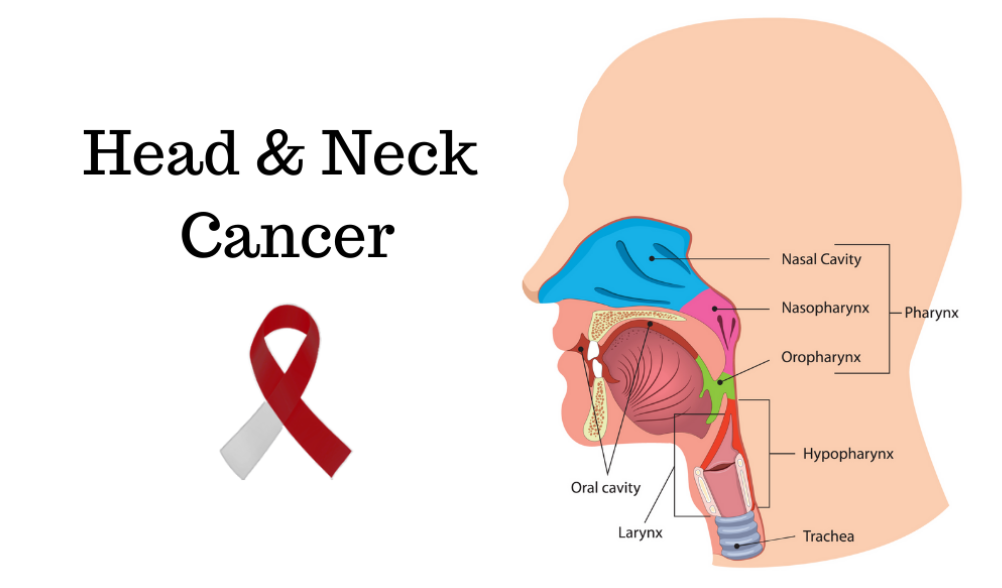Understanding Head and Neck Cancer: Head and neck cancer encompasses a diverse group of cancers that arise in the head and neck region, a critical area of the body that includes the oral cavity, pharynx, larynx, nasal cavity, and salivary glands. This type of cancer not only affects the physical well-being of individuals but also has a profound impact on their emotional and social lives. In this blog, we will talk about the essential aspects of head and neck cancer, including its risk factors, prevention strategies, and treatment options, aiming to provide valuable insights for those seeking to understand this challenging condition.
What Is Head and Neck Cancer?
Head and neck cancer refers to malignant tumors that develop in the tissues and organs of the head and neck. The most common type of head and neck cancer originates from the squamous cells that line the moist surfaces inside the head and neck, known as squamous cell carcinoma. Early detection and treatment are crucial for improving the prognosis and quality of life for those affected.
Risk Factors and Prevention
Several risk factors are associated with head and neck cancer, including tobacco use, excessive alcohol consumption, human papillomavirus (HPV) infection, prolonged sun exposure, and certain occupational exposures. Understanding these risk factors is the first step toward prevention.

Prevention Strategies
- Tobacco and Alcohol: Avoiding tobacco in all forms and moderating alcohol intake can significantly reduce the risk of developing head and neck cancer.
- HPV Vaccination: Receiving the HPV vaccine can protect against infections that may lead to head and neck cancers, particularly those involving the oropharynx.
- Sun Protection: Using sunscreen and protective clothing can minimize the risk of skin cancer in the head and neck region.
- Regular Screenings: Early detection through regular dental and medical check-ups can lead to the identification of precancerous conditions or early-stage cancers.
Treatment Strategies for Head and Neck Cancer
Treatment for head and neck cancer depends on the type, location, and stage of the cancer, as well as the patient’s overall health. Common treatment modalities include surgery, radiation therapy, chemotherapy, targeted therapy, and immunotherapy. A multidisciplinary team approach is often employed to tailor the treatment plan to the individual’s specific needs, optimizing outcomes and preserving function and appearance as much as possible.
The Role of Rehabilitation
Rehabilitation plays a vital role in the recovery process for patients undergoing treatment for head and neck cancer. Speech and swallowing therapy, nutritional support, and physical therapy are integral components of a comprehensive rehabilitation program, helping patients regain their ability to speak, eat, and perform daily activities.
Progress in Head and Neck Cancer Care
Advancements in medical research continue to provide hope for those affected by head and neck cancer. Innovations in diagnostic techniques, treatment strategies, and rehabilitation services are improving survival rates and quality of life for patients. Ongoing awareness and education about head and neck cancer are essential to encourage early detection and prevention.
Conclusion
In conclusion, head and neck cancer represents a significant health challenge, but with early detection, effective treatment, and comprehensive rehabilitation, patients can achieve positive outcomes. Awareness, education, and lifestyle changes play crucial roles in prevention, highlighting the importance of understanding this complex disease.
Frequently Asked Questions (FAQs)
1. Can head and neck cancer be cured?
Yes, head and neck cancer is curable, especially if diagnosed early. Treatment success varies based on the cancer type, stage, and overall health of the patient.Understanding Head and Neck Cancer: Head and neck cancer encompasses a diverse group of cancers that arise in the head and neck region, a critical area of the body that includes the oral cavity, pharynx, larynx, nasal cavity, and salivary glands. This type of cancer not only affects the physical well-being of individuals but also has a profound impact on their emotional and social lives. In this blog, we will talk about the essential aspects of head and neck cancer, including its risk factors, prevention strategies, and treatment options, aiming to provide valuable insights for those seeking to understand this challenging condition.
2. Is head and neck cancer contagious?
No, head and neck cancer is not contagious. However, HPV, a virus linked to certain types of head and neck cancer, can be spread through close contact.
3. How can I reduce my risk of head and neck cancer?
Reducing tobacco and alcohol use, receiving the HPV vaccine, protecting skin from excessive sun exposure, and undergoing regular screenings are effective ways to lower your risk of head and neck cancer.

